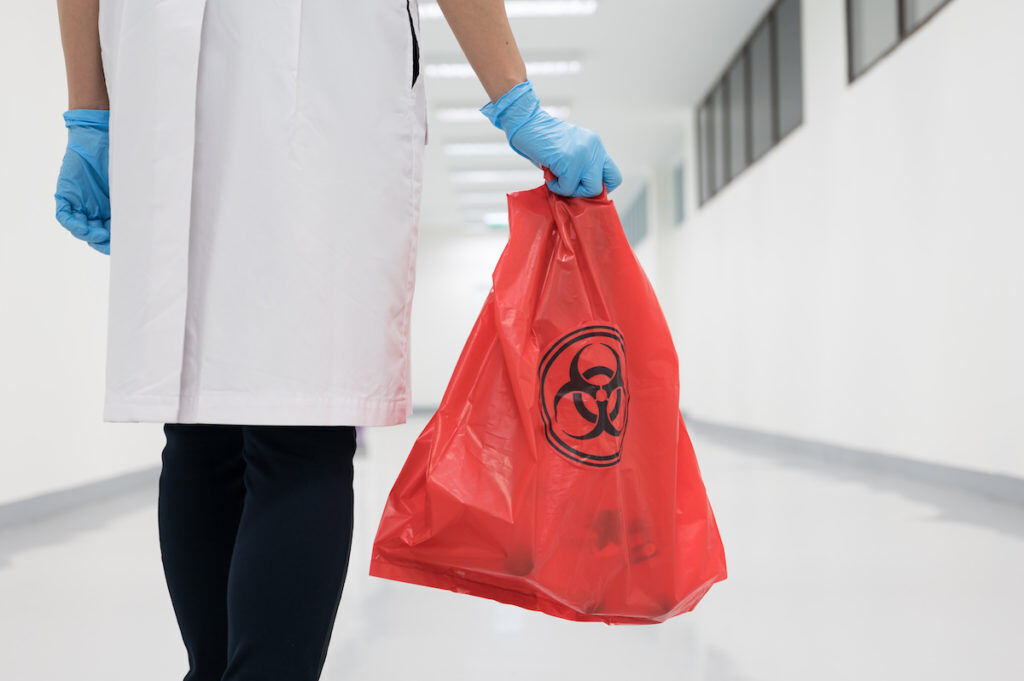Blood waste, also known as biomedical waste, refers to any waste generated from medical, diagnostic, or research activities that pose a risk of infection or injury to those handling it. Because of its sensitive nature, it's important to heed safety protocols when disposing of biohazardous waste.
What Diseases Can Blood Waste Carry?
Biohazard waste includes liquid waste, biological waste, medical waste, and human anatomical waste. Knowing the differences among the biohazard refuse is vital so there is a decreased risk of decontamination.
Blood waste can carry various diseases, including but not limited to:
- Hepatitis B and C
- Human Immunodeficiency Virus (HIV)
- Tuberculosis (TB)
- Malaria
- Syphilis
Improper disposal of blood waste poses a significant risk to public health and the environment. When discarding microbiology laboratory waste, wearing personal protective equipment (PPE) is a must; PPE can safeguard you against exposure to harmful contaminants. Disposing of blood waste in a dumpster is illegal as it can contaminate soil and groundwater, potentially spreading diseases to the surrounding community.
Don't throw out liquid waste or pathological waste in dumpsters. They are not designed to contain infectious waste, and their contents can easily spread by wind or wildlife, jeopardizing the environment and public health. Improper disposal of blood waste can lead to serious consequences, such as fines and legal action.
What Are Biohazard Waste Bags?
Proper removal of blood waste can help prevent an infection outbreak and maintain a clean environment. Biohazard waste bags are intended to safely transport and dispose of biomedical waste, including blood refuse.
These bags are typically made of heavy-duty plastic material that securely holds and prevents the spread of any infectious materials. These bags are usually red in colour and feature a biohazard symbol, indicating that the waste within is highly unsafe.

When placing biohazard waste in a bag, please make sure that the bag is securely sealed and properly labelled. Check that all relevant information, such as patient information and the bag's content, is included on the label. This guarantees the efficient disposal of biohazard waste and avoids any risk of contamination.
The following items should be placed in biohazard waste bags:
- Biohazardous waste
- Sharps waste and sharps containers (note: it must be sealed in a biohazard sharps container first)
- Animal anatomical waste
- Human tissues
- Used needles and syringes
- Cultures and stocks of infectious agents
- Blood and blood products
- Used specimen swabs
- Items soaked with human blood and human bodily fluids
- Any item contaminated with blood or other potentially infectious materials (OPIM)
The following items should not be placed in biohazard waste bags:
- Disposable gowns
- Intravenous bags
- Vomit and vomit-infected materials
- Soiled linens
- Discarded pharmaceuticals
Biohazard waste bags should be disposed of in designated areas, such as a designated garbage receptacle or a particular biohazard waste container.
To properly use biohazard waste bags, follow these steps:
- Select the appropriate size of biohazard waste bag for the amount of waste you have.
- Place the waste into the biohazard bag and close it securely, ensuring it does not spill.
- Store the bag securely until it can be transported for proper disposal.
- Transport the biohazard waste bags to a licensed disposal facility authorized to handle the biomedical waste.
It is vital to properly dispose of blood waste to prevent the spread of disease and protect public health and the environment. Biohazard waste bags are a safe and effective way to contain and dispose of blood waste and other hazardous materials. Make sure to correctly label and secure the bags and follow all regulations for waste management.
Call PuroClean for Biohazard Waste Disposal
It is best to contact professional biohazard cleanup services if you need to clean up a hazardous situation due to blood or other biohazard waste. Our experienced PuroClean technicians are highly trained and have the equipment to safely remove, contain, and responsibly dispose of sensitive materials.
Our team is available 24/7 and is committed to providing fast and effective service to help you get your home or business back to its original condition. Please contact us to learn how our professional biohazard cleanup services can help. Visit our online office locator or call (877) 261-7876 today to find your local PuroClean office.
